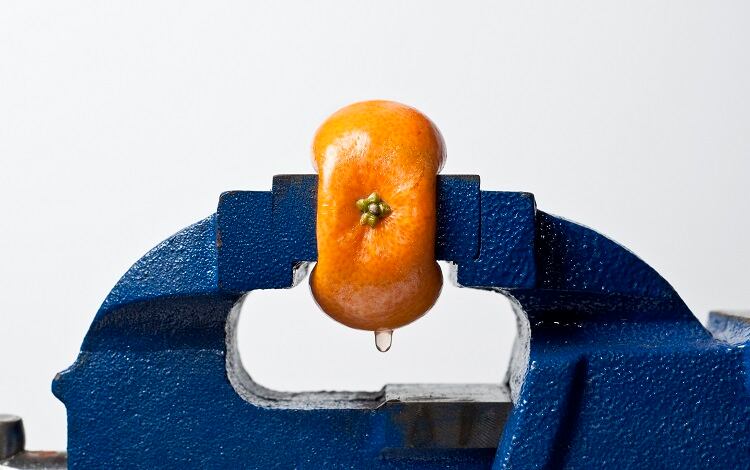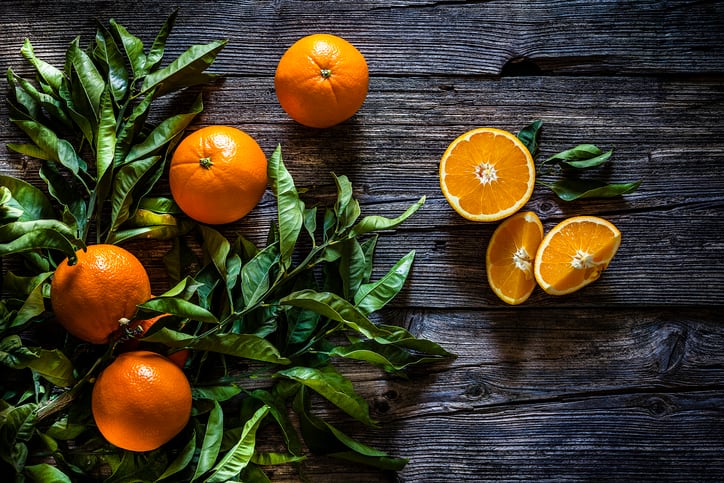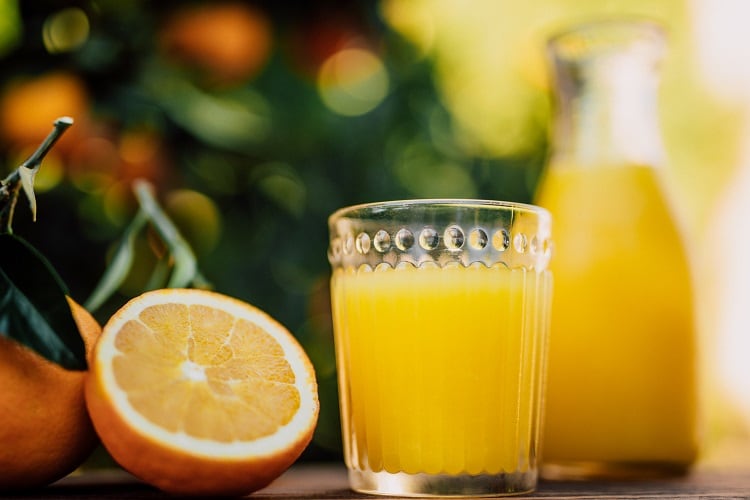Predictions aren’t favourable for juice manufacturers as they continue to struggle with orange shortages, price hikes, and now declining market share.
And everyone’s affected, according to market research company Circana. Private label and brands alike are being forced to keep orange juice prices high, with the market research company warning the future looks ‘challenging’.
Why are oranges in short supply?
Supply shortages are plaguing the orange juice sector. Perhaps more exposed than most – the vast majority of the world’s orange juice is produced in two countries, the US and Brazil – the sector has been battling a mixture of bad weather and disease.
In 2022 a hurricane in Florida damaged harvests, while Brazil was hit by a severe drought over the summer and more recently, catastrophic floods. In both countries, citrus greening disease has compounded supply issues.
With with the prospect of a poor harvest in Brazil, orange prices have spiked. According to the Financial Times’ commodity pricing service, frozen orange juice futures pricing is up 65.4% compared to a year ago.
How are rising orange costs hitting juice prices?
Unable or unwilling to shoulder the added costs, orange juice manufacturers have been passing them onto consumers.
“The inflation that we are experiencing is not something that we are able to absorb, so we have been left with no other choice but to increase our costs," explained Sarah Baldwin, CEO of Juice Burst owner Purity Soft Drinks. Baldwin is also a board member of the British Soft Drinks Association.
"We’ve tried to avoid passing on these cost increases for as long as possible. To ensure that we remain efficient as a business, while never compromising on the quality of our drinks, this is a route that we have had to take."
Compared to 12 months prior to 20 May 2024, the average unit price for orange juice is up 10.8%, according to data from the UK. That’s according to an unweighted average unit price comparison of the top 100 orange juice products assessed by Circana.
In terms of volume, the average price for orange juice has increased even more. Compared to last year, it’s up 15% and according to Alex Lawrence, senior strategic insight director at Circana, ‘shows no signs of slowing’.
The market research firm has observed that price inflation in orange juice is staying higher for longer compared to juice, and in particular compared to soft drinks – a category seeing inflation slowing.
The average volume price for orange juice is up more than 15% compared to this time last year. This is slightly higher than for juice (up 13.5%) and markedly higher than soft drinks (up 9.1%).
But average volume price varies according to channel. In the symbols (such as Londis, Spar etc) and independent outlets, an increase of 24.8% in the 13 weeks prior to 20 May was observed, which Lawrence attributes to reduced buying power compared to supermarket majors. The latter saw an increase of just 16.4% where private label dominates.
“The commodity price inflation is clearly forcing manufacturers, private label and brands alike, to keep orange juice prices high as they battle to cope with cost increases,” says the insights director.
Sales fall amid orange juice price hikes
Perhaps unsurprisingly, elevated prices are having an impact on consumer purchase behaviour.
Compared to this time last year, volume sales of orange juice are down 15.2%. In line with their high price increases, symbols and independent channels have been hit the hardest by volume decline.
Soft drinks, on the other hand, are slowly rebounding. Volume sales of orange juice, too, have turned to growth in more recent times, but not to the same extent, explained Circana’s Lawrence.
Can brands innovate their way out of the orange juice crisis?
Some are trying. In the UK, HPP juice brand Coldpress is experimenting with other fruits. The company recently launched a mandarin juice it claims offers consumers the same benefits of orange juice, but at a similar price to apple juice (which is around 15% cheaper than orange juice).
Manufacturer Purity Soft Drinks (which owns juice brands Juice Burst), is another company innovating, explained CEO Sarah Baldwin. “To help with this challenge, we have...introduced new pack formats and will continue to consider different solutions to make sure we continue to deliver the juice that consumers have come to know and love.”
New opportunities are also arising within the ingredients sector. In December last year, ingredients supplier ADM told us demand had already been observed from beverage customers interested in its citrus flavour capabilities.
They want to create an orange blend but retain the same taste profile as conventional orange juice, we were told.
Overall, the insight director has concerns orange juice manufacturers are in for a bumpy ride. “With no signs of orange juice commodity pricing reducing in the coming months, the prospects for orange juice manufacturing looks challenging…
“As they battle with increased costs, they can expect to see margin reduce and/or their volume share of the soft drinks market erode.”




